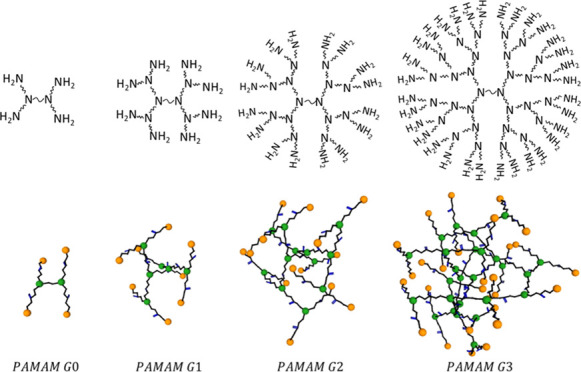- Record: found
- Abstract: found
- Article: found
Elimination of Interface Energy Barriers Using Dendrimer Polyelectrolytes with Fractal Geometry

Read this article at
Abstract

In this work we study conjugated polyelectrolyte (CPE) films based on polyamidoamine (PAMAM) dendrimers of generations G1 and G3. These fractal macromolecules are compared to branched polyethylenimine (b-PEI) polymer using methanol as the solvent. All of these materials present a high density of amino groups, which protonated by methoxide counter-anions create strong dipolar interfaces. The vacuum level shift associated to these films on n-type silicon was 0.93 eV for b-PEI, 0.72 eV for PAMAM G1 and 1.07 eV for PAMAM G3. These surface potentials were enough to overcome Fermi level pinning, which is a typical limitation of aluminium contacts on n-type silicon. A specific contact resistance as low as 20 mΩ·cm 2 was achieved with PAMAM G3, in agreement with the higher surface potential of this material. Good electron transport properties were also obtained for the other materials. Proof-of-concept silicon solar cells combining vanadium oxide as a hole-selective contact with these new electron transport layers have been fabricated and compared. The solar cell with PAMAM G3 surpassed 15% conversion efficiency with an overall increase of all the photovoltaic parameters. The performance of these devices correlates with compositional and nanostructural studies of the different CPE films. Particularly, a figure-of-merit ( V σ) for CPE films that considers the number of protonated amino groups per macromolecule has been introduced. The fractal geometry of dendrimers leads to a geometric increase in the number of amino groups per generation. Thus, investigation of dendrimer macromolecules seems a very good strategy to design CPE films with enhanced charge-carrier selectivity.
Related collections
Most cited references56

- Record: found
- Abstract: found
- Article: found
Dendrimers: synthesis, applications, and properties
- Record: found
- Abstract: not found
- Article: not found